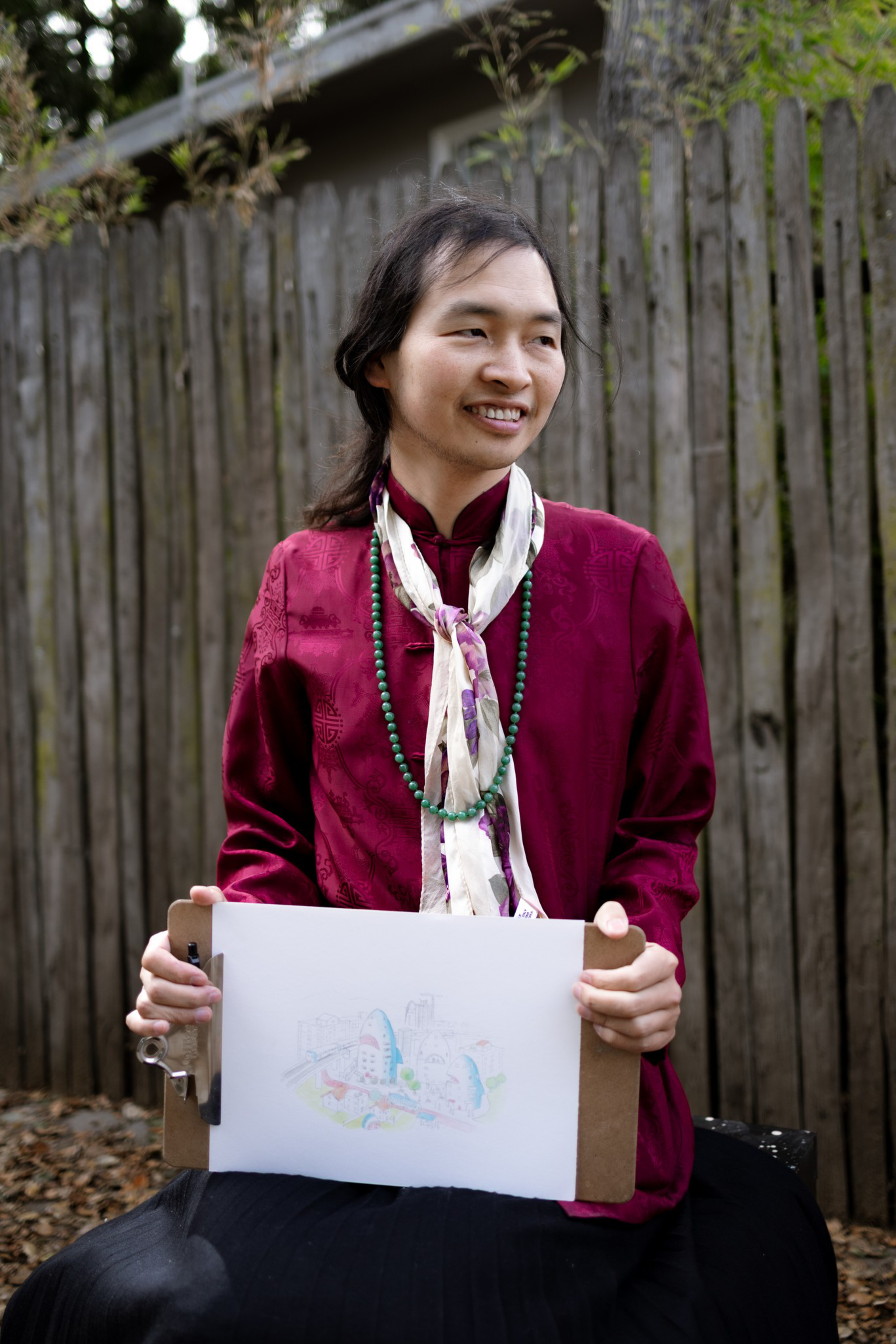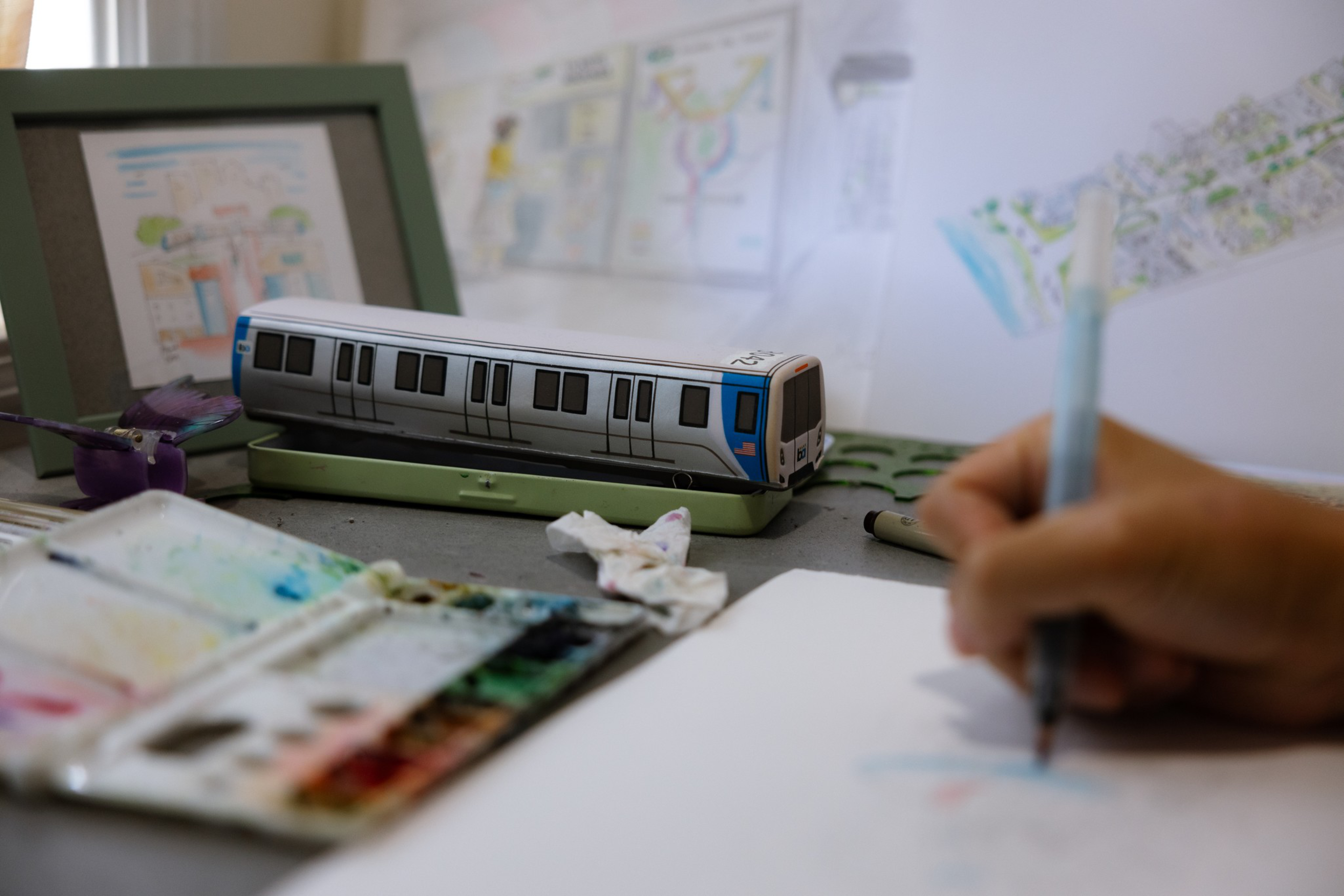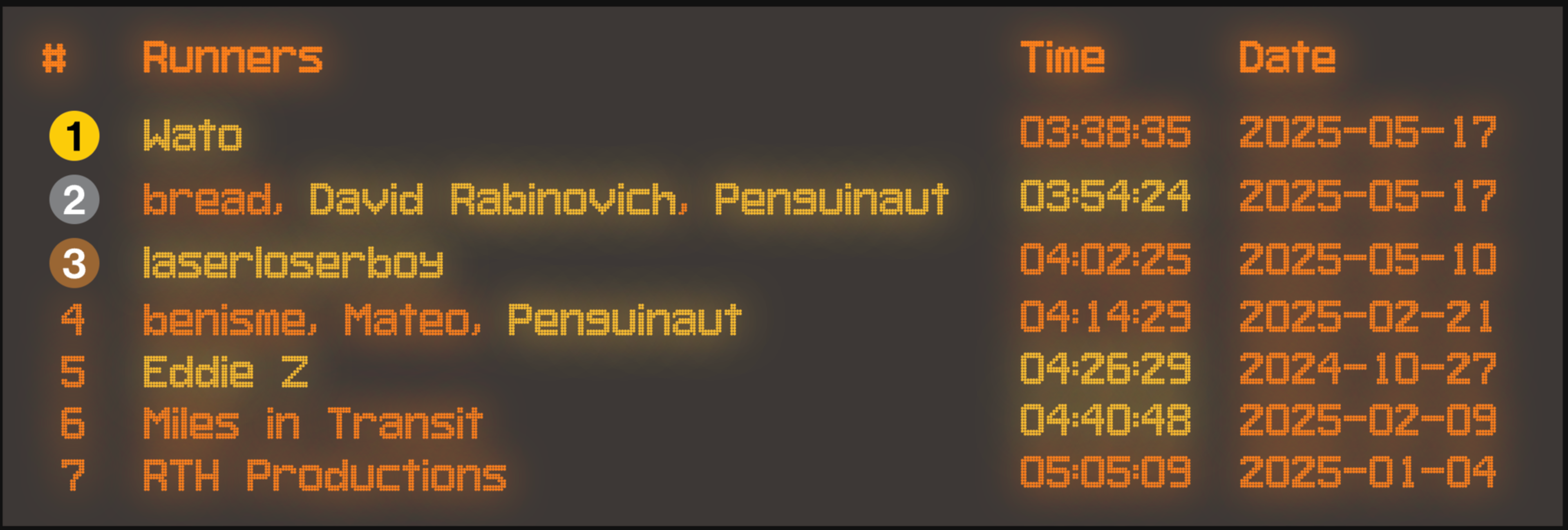They show up to Halloween parties dressed as BART trains and stuff Muni-branded beanies into holiday stockings. Some vie for glory by trying to race through every station as quickly as possible. Others immortalize their favorite trains in paint, deli menus, or anime fan art.
Yes, we’re talking about the niche community of transit superfans who view these systems as way more than a way to get around. Forget Brat Summer; for these folks, it’s BART all year round.
At a moment when Bay Area transit agencies are still clawing back riders and revenue since the pandemic slump, this quirky fandom is thriving. To these subway stans, a train isn’t just a train; it’s a symbol of civic pride, nostalgia, and the weird magic of living here.
And the agencies themselves? They’re leaning all the way in.
“Muni matters to so many people — it’s the ride for students to get to school, workers to their jobs, and visitors to the landmarks that make San Francisco a world-renowned city,” a San Francisco Municipal Transportation Agency spokesperson said.
A BART spokesperson said the agency values the voices of its “superfans,” who share honest feedback and promote transit culture both online and in the community.
“We’ve embraced these passionate riders, especially as their real-time input helps us improve service and communication,” spokesperson Alicia Trost said.
Next month, the third annual SweaterFest (opens in new tab) will come to BART’s Rockridge station. Attendees are asked (required?) to wear BART-themed sweaters and pose for a family photo. Meanwhile, Muni is hosting a themed ice-skating night (opens in new tab) in Union Square. Not to be outdone, BART has anime mascots and a dedicated “speedrun (opens in new tab)” record book tracking who can blaze through the full system the fastest.
Here’s a closer look at a few members of this cultural movement.
Alfred Twu

For Berkeley architect Twu, public transit isn’t just transportation — it’s a muse.
Twu paints BART trains in watercolors, often making them friendly characters in the kawaii (“cute” in Japanese) dreamy cartoon cityscapes showcased on their Instagram (opens in new tab) account. While most of us see a crowded car as a nuisance, Twu sees a rolling community center.
“It’s one of those things that really brings the whole city together,” Twu said. “Different people might live in different neighborhoods, they might go to different stores, work different jobs, but everyone rides BART together or commutes together.”

Twu doesn’t own a car and relies entirely on public transit. But that decision has brought new friends and new inspiration, like the unofficial BART-themed art festival this fall that drew around 100 fans.
Growing up between New Jersey and Taiwan, Twu experienced transit systems that expanded their imagination. They crisscrossed New York’s vast subway system and explored the bustling malls inside Taiwan’s train stations. Twu wants the Bay Area to arrive at that destination as well.
“I’ve seen places where they’ve gone to the next level, beyond where the Bay Area is at, and it’s great,” Twu said. “And I want to bring that here too.”
Saleh Albowyha
The M Stop Deli owner is more of a sandwich artist than an urbanist. But his love of Muni goes back to riding the L-Taraval line as a teenager.
Albowyha’s Ingleside shop conjures classic deli smells and a healthy hit of nostalgia.
The facade is decked out with M train murals, and the sandwich menu is a full-on homage to Muni’s lines. There’s the 54 (smoked chicken), the K Line (pastrami), and the top-selling M Line: tri-tip with garlic spread and barbecue sauce. The menu itself is designed to look like vintage 1990s tear-off transfer (opens in new tab) tickets.
“It’s part of our culture,” Albowyha said. “I think so many people, being raised in the city, many of our memories come from some form of transportation, whether it be Muni or BART.”
Albowyha took over the liquor store Sam’s Market three and a half years ago but wanted to change course. After selling the liquor license, he reopened as a halal deli in 2022 and struggled to find a brand identity … until the M train rumbled by.
“I was like, wait, that’s what San Francisco needs,” he said. “We need a Muni-themed deli.”
Plus, he’s kind of obsessed with the brand.
“That worm is probably the coolest logo ever,” he said.
Ren Fitzgerald

Public transit isn’t just a convenient train ride to Fitzgerald — it’s a climate solution, an affordability strategy, and a pathway to racial justice.
“Public transit gives people kind of a new shot at life, a new way to get around, and independence,” said the 20-year-old UC Berkeley urban studies major.
They became infatuated with public transit during the pandemic, because of — why else? — BART’s Twitter and TikTok personae.
Fitzgerald turned superfandom into a job. They now occasionally help BART with social media content and love the agency’s anime-forward youth outreach.

“The things that bring young people in aren’t necessarily talking about Clipper START programs or about fare gates or frequency,” Fitzgerald said. “It’s meeting us at our subcultures.”
But they’re also clear-eyed: BART needs money to keep going.
“If we put just a fraction of the money we put toward highway maintenance every single year, agencies can then make a much better service that has more trains, more buses, making sure that people aren’t waiting as long,” Fitzgerald said.
Henry Smith
Most riders dread delays. For this 17-year-old transit speedrunner, they’re part of the thrill.
Smith dove into BART and Muni Metro speedrunning in late 2024 after watching videos from YouTuber Adam (opens in new tab) and the online travel reality show “Jet Lag: The Game (opens in new tab).” Now he helps run transitruns.org (opens in new tab), which ranks speedruns across systems worldwide.

Muni’s unpredictable timing makes it fun, and frustrating.
“The train times fluctuate a lot — like, you could have a train on Muni that’s 20 minutes late all the way to, like, 10 minutes early,” he said. “It’s really unpredictable, versus BART, which tends to have the same two- to three-minute delays on every single line constantly.”
Smith holds the third-place record (opens in new tab) for a Muni speedrun, at just over four hours, thanks in part to meticulous planning and optimization. Streetrun attempts start around 5 a.m., catching a train he referred to as the “JN” near the Balboa Park all the way to Ocean Beach, where the run starts. Early riding means less traffic for the experienced speedrunner.

Muni runs are more popular than BART’s — they’re shorter and faster. Muni Metro covers 71 miles, while BART covers 131. But the real reward, Smith said, is the community.
“It might seem like a small accomplishment to be on the top of this, currently, small group of people. But it feels like it could be something bigger, something more. And I guess that’s why we just keep doing it.”
